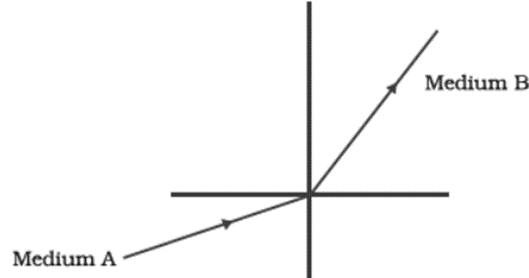CBSE Class 10 Science Practice Paper PDF: CBSE class 10 students can find here the Science practice paper, exclusively, prepared for the CBSE Class 10 Science Exam 2024. This practice paper is a comprehensive resource designed to enhance your preparation for the upcoming exam. The class 10 Science practice paper aligns with the latest exam pattern. Developed by experienced subject teachers, the practice paper covers key topics and reflects trends from previous years. Solutions to all questions of the practice paper are also provided here to help students find the right approach for answering each question. The CBSE Class 10 Science practice paper provided below serves as a crucial tool for self-assessment and boosting confidence for a stellar performance in the CBSE Class 10 Science Exam 2024.
Important* Important Last Minute Tips and Resources for CBSE Class 10 Science Exam 2024
Check and download the practice paper and solutions in PDF format below:
The pattern of the CBSE Class 10 Science Practice Paper 2024 is as follows:
1. There are total 39 questions divided into 5 sections.
2. Section A consists of 20 MCQs carrying 1 mark each.
4. Section B consists of 6 Very Short Answer Type Questions carrying 2 marks each.
5. Section C consists of 7 Short Answer Type Questions carrying 3 marks each.
6. Section D consists of 3 Long Answer Type Questions carrying 5 marks each.
7. Section E consists of 3 source-based/case-based questions of 4 marks each with sub-parts.
Check CBSE Class 10 Science Chapter-wise Marking Scheme for Board Exam 2024
CBSE Class 10 Science Practice Paper for Board Exam 2024
SECTION – A
1. A red brown gas is released along with oxygen and lead oxide on heating lead nitrate. It is an example of :
(a) Combination reaction
(b) Oxidation reaction
(c) Decomposition reaction
(d) Reduction reaction
2. The poorest conductor of heat among metals is
(a) Lead
(b) Mercury
(c) Calcium
(d) Sodium
3. The process in which a carbonate ore is heated strongly in the absence of air to convert it into metal oxide is called
(a) Roasting
(b) Reduction
(c) Calcination
(d) Smelting
4. The chemical formula for plaster of Paris is
(a) CaSO4.3H2O
(b) CaSO4.2H2O
(c) CaSO4.1/2H2O
(d) 2CaSO4.2H2O
5. C3H8 belongs to the homologous series of
(a) Alkynes
(b) Alkenes
(c) Alkanes
(d) Cyclo alkanes
6. Roots of plants are:
(a) positively geotropic
(b) negatively geotropic
(c) positively phototropic
(d) None of these
7. Bryophyllum can be propagated vegetatively by the
(a) stem
(b) leaf
(c) root
(d) flower
8. A trait in an organism is influenced by
(a) paternal DNA only
(b) maternal DNA only
(c) both maternal and paternal DNA
(d) neither by paternal nor by maternal DNA
9. A light ray enters from medium A to medium B as shown in figure. The refractive index of medium B relative to A will be

(a) greater than unity
(b) less than unity
(c) equal to unity
(d) zero
10. First link in any food chain is usually green plants because
(a) they are widely distributed
(b) they are fixed at one place in the soil
(c) they alone have the capacity to synthesise food using sunlight
(d) there are more herbivores than carnivores
11. The enzyme responsible for the digestion of proteins in the small intestine is:
(a) Pepsin
(b) Trypsin
(c) Amylase
(d) Lipase
12. At noon the sun appears white as
(a) light is least scattered.
(b) all the colours of the white light are scattered away.
(c) blue colour is scattered the most.
(d) red colour is scattered the most.
13.The S.I unit used to measure specific resistance is:
(a) Ohm meter
(b) Ohm
(c) Volt
(d) No unit
14 .A constant current flows in a horizontal wire in the plane of the paper from east to west as shown in the figure. The direction of magnetic field at a point will be North to South
(a) directly above the wire
(b) directly below the wire
(c) at a point located in the plane of the paper, on the north side of the wire
(d) at a point located in the plane of the paper, on the south side of the wire.
15. Roots of the plants absorb water from the soil through the process of:
(a) diffusion
(b) transpiration
(c) osmosis
(d) None of these
16. Which of the following are energy foods?
(a) Carbohydrates and fats
(b) Proteins and mineral salts
(c) Vitamins and minerals
(d) Water and roughage
Download the complete practice paper and solutions from the links provided below:
Also Check:
CBSE Class 10 Science Sample Paper for Board Exam 2024
CBSE Class 10 Science Additional Questions by CBSE for Board Exam 2024
CBSE Class 10 Science Deleted Syllabus for Board Exam 2024

Comments
All Comments (0)
Join the conversation